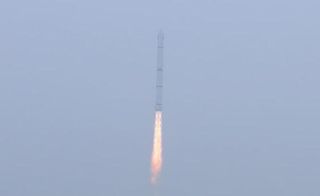China launches SuperView remote-sensing satellites on Long March 2C rocket
The mission marks China's 24th orbital launch of 2022.
China sent a pair of commercial remote sensing satellites into orbit with its 24th orbital launch of 2022.
A Long March 2C rocket lifted off from the Taiyuan Satellite Launch Center in north China at 6:67 p.m. EDT on July 15 (2257 GMT, or 6:57 a.m. Beijing Time on July 16).
SuperView Neo 2 (01) and (02) were sent into near-polar orbits. The pair are the first synthetic aperture radar (SAR) satellites for China Siwei Surveying and Mapping Technology Co. Ltd. (China Siwei), a satellite imagery and data services company, according to Nasaspaceflight.com.
Related: China's Long March rocket familly in photos

China Siwei has previously launched optical imaging satellites, including a recent pair providing a ground resolution of 11.8 inches (30 centimeters) per pixel.
The new satellites will provide commercial remote sensing services for sectors such as land resources investigation, natural disaster monitoring, urban planning and safety, according to Chinese state media Xinhua.
The satellites were designed and developed by DFH Satellite Co., Ltd. of China Academy of Space Technology (CAST), which belongs to China's main state-owned space contractor, the China Aerospace Science and Technology Corporation (CASC).
Get the Space.com Newsletter
Breaking space news, the latest updates on rocket launches, skywatching events and more!
The Long March 2C was designed and manufactured by China Academy of Launch Vehicle Technology (CALT), also owned by CASC.
China has now launched 24 missions so far this year, including one failure by commercial launch firm iSpace. CASC is planning more than 50 flights overall in 2022, including completing its Tiangong space station.
Follow us on Twitter @Spacedotcom or on Facebook.
Join our Space Forums to keep talking space on the latest missions, night sky and more! And if you have a news tip, correction or comment, let us know at: community@space.com.

Andrew is a freelance space journalist with a focus on reporting on China's rapidly growing space sector. He began writing for Space.com in 2019 and writes for SpaceNews, IEEE Spectrum, National Geographic, Sky & Telescope, New Scientist and others. Andrew first caught the space bug when, as a youngster, he saw Voyager images of other worlds in our solar system for the first time. Away from space, Andrew enjoys trail running in the forests of Finland. You can follow him on Twitter @AJ_FI.
